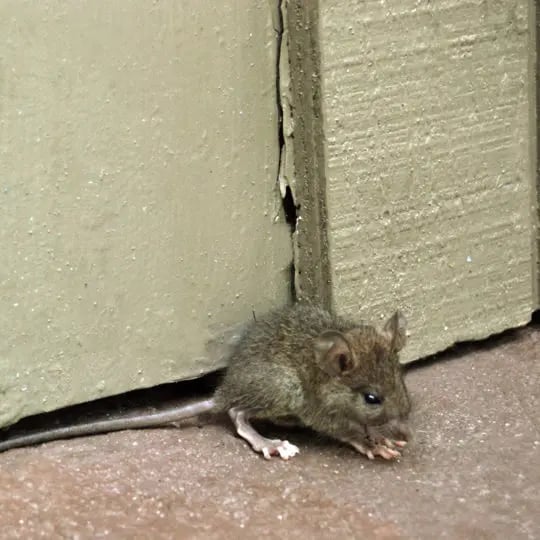
Scientific Name: Peromyscus
Lifespan: 1 to 5 years
Problem: Property damage, disease, causing people to scream and jump on tables.
Deer mice (Peromyscus) are large-eyed, agile mice, with two-toned tan and white coloring reminiscent of that of a deer. In the Western U.S., deer mice are infamous as the primary carriers of the Hantavirus, a virus transmitted through contact with mouse saliva, urine and excrement that can lead to pulmonary disease and even death.
Deer mice also chew property, leave behind unsanitary droppings, and cause damage with their nesting activities.
The Deer Mouse Life Cycle
- Babies – Female deer mice are capable of giving birth 11 times a year, having 1-9 babies each time. The baby mice are extremely small when first born (about 1-2 grams), and remain in the nest. Nests are made from shredded and natural materials such as fabric, wood shavings, moss and feathers.
- Juveniles – During the 5-6 weeks after birth, deer mice are considered juveniles. During this time, the mice are weaned from their mother and begin to move around on their own. After the fourth week, juvenile deer mice are fully weaned and by the fifth, they become capable of reproduction.
- Mature Animals – Mature deer mice are 7-10 cm long, not counting the tail, which is roughly the same length as the body. Their outer fur is a light brown color while the fur on their undersides is white.
Deer Mouse Habitats and Habits
Deer mice are common throughout North America. Some species of deer mouse live in and near wooded areas that provide them with hollow trees and rock crevices to make their homes in, while others live in grasslands and mountainous areas. They are attracted to the warmth and safety from predators that human habitations provide.
Deer mice are primarily nocturnal and rarely seen during the day. They are omnivores and will collect large amounts of nuts, berries, seeds, flowers and insects during the night, storing most of their findings away for the winter, as squirrels do.
How to Recognize and Get Rid of a Deer Mouse Infestation
Nests, droppings, and signs of gnawing are indications that you may have a mouse infestation. Deer mouse droppings are potential carriers of the Hantavirus, but are difficult to distinguish from the droppings of other mouse types, being small (3-6 mm), smooth and having pointed ends. If you suspect you have deer mice, use extreme caution when handling droppings.
To discourage deer mice from using your home as theirs, fill any cracks or holes in the walls with caulking to prevent their entry and seal away all food and water (particularly at night, when deer mice are most active).
Need Help with Deer Mice Identification | Mouse Control in PA, NJ, DE?
Call today at and let's talk about how we can help you with Deer Mice Identification | Mouse Control in PA, NJ, DE and other Pest Library.